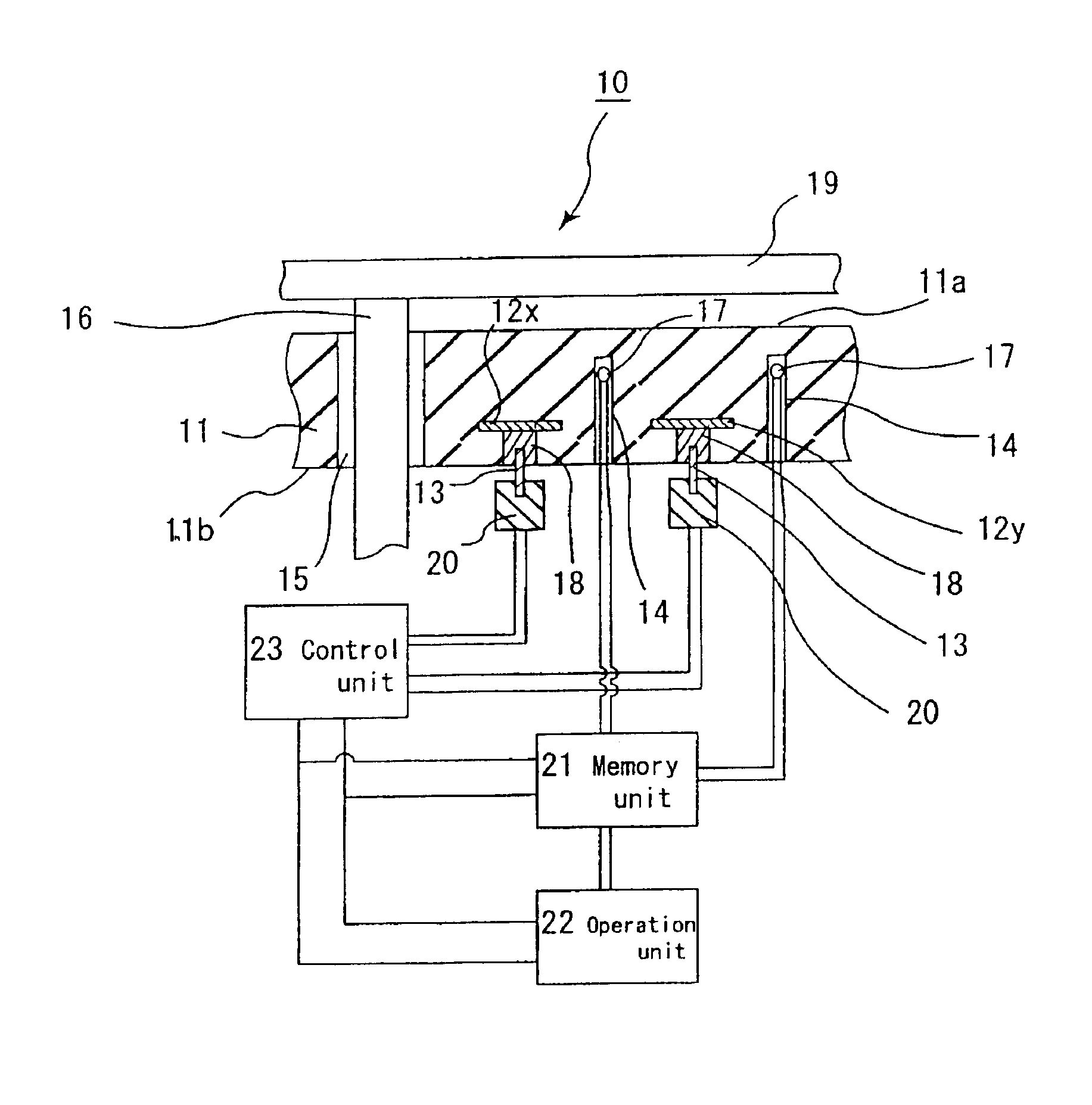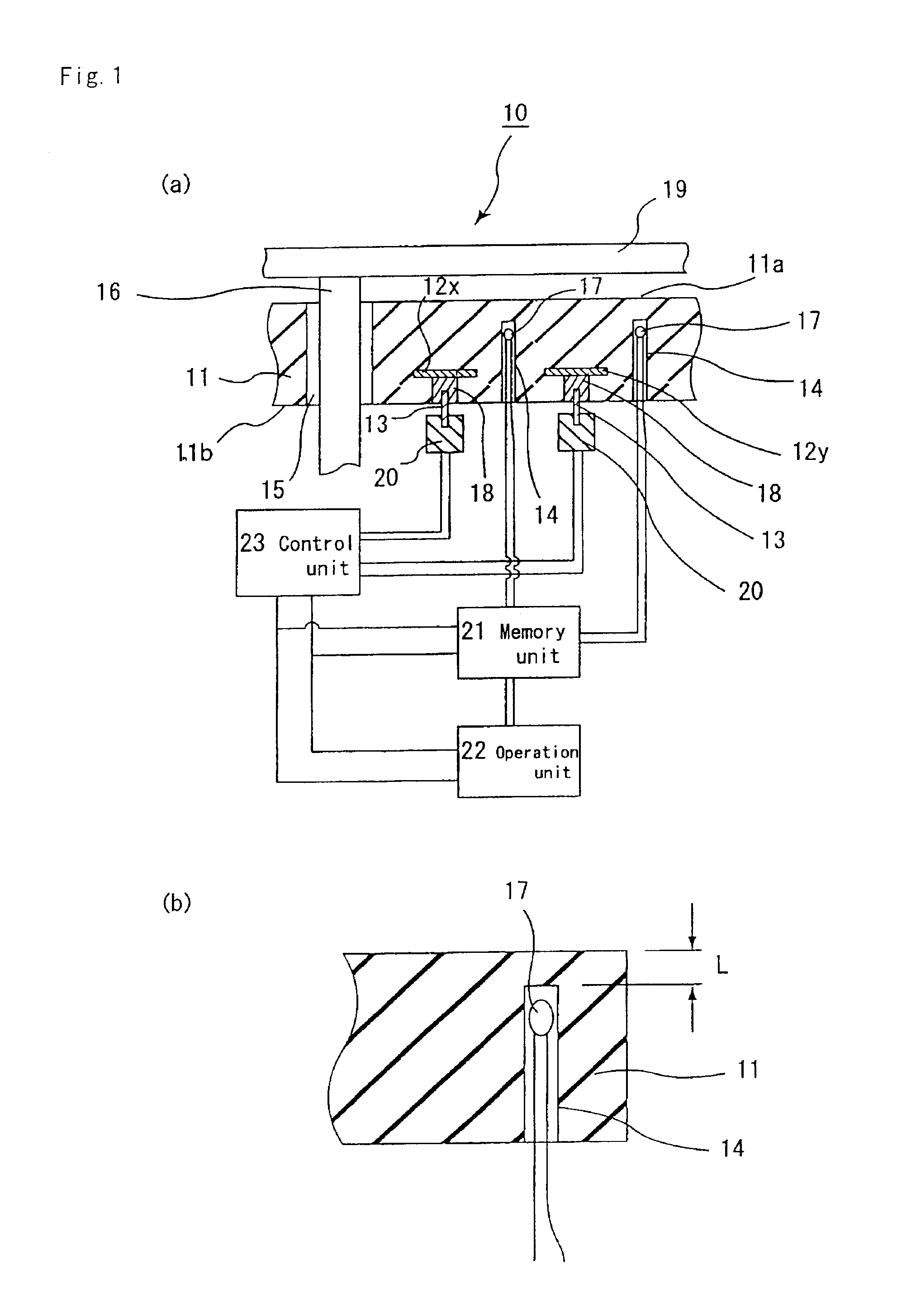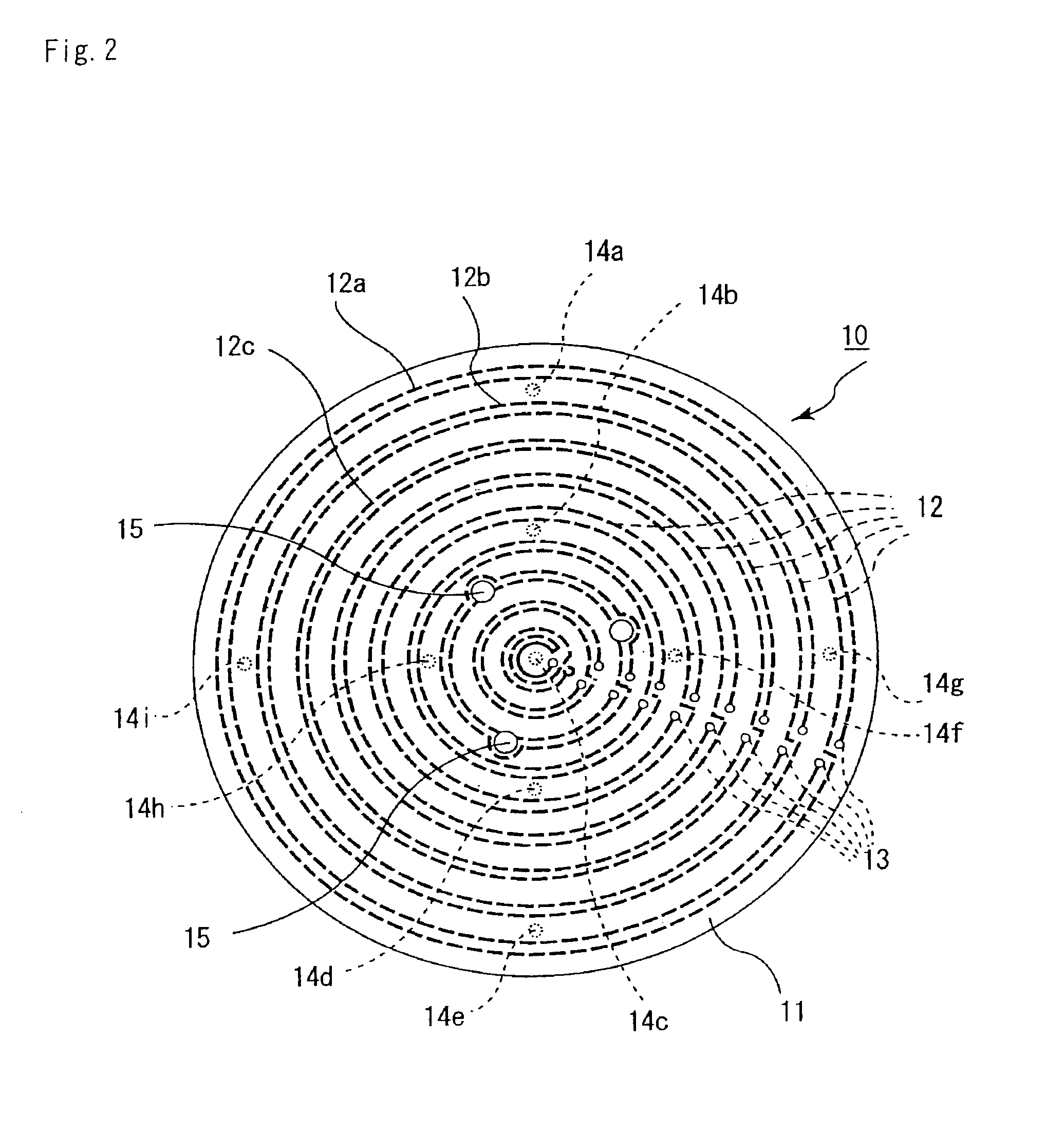Ceramic heater
a ceramic heater and heater body technology, applied in the field of ceramic heaters, can solve the problems of heavy and bulky heaters, and the inability to easily control temperature, and achieve the effect of preventing damage to silicone wafers
- Summary
- Abstract
- Description
- Claims
- Application Information
AI Technical Summary
Benefits of technology
Problems solved by technology
Method used
Image
Examples
example 1
(Example 1)
Manufacture of a Ceramic Heater made of Aluminum Nitride (reference to FIG. 3)
[0184](1) A composition made of 100 parts by weight of aluminum nitride powder (average particle diameter: 1.1 μm), 4 parts by weight of yttria (average particle diameter: 0.4 μm), 12 parts by weight of an acrylic binder and an alcohol was subjected to spray-drying to make granular powder.[0185](2) Next, this granular powder was put into a mold and formed into a flat plate form to obtain a raw formed body (green).[0186](3) The raw formed body subjected to the above-mentioned working treatment was hot-pressed at 1800° C. and a pressure of 20 MPa to obtain a nitride aluminum plate having a thickness of 3 mm.
[0187]Next, this plate was cut out into a disk having a diameter of 210 mm to obtain a plate (heater plate) 31 made of the ceramic.
[0188]This raw formed body was drilled to form: portions for through holes 35, into which lifter pins for the silicon wafer are inserted; and portions (diameter: 1....
example 2
(Example 2)
Manufacture of a Ceramic Heater made of Silicon Carbide
[0196]A ceramic heater made of silicon carbide was manufactured in the same way as in Example 1 except that silicon carbide having an average particle diameter of 1.0 μm was used, sintering temperature was set to 1900° C., and the surface of the resultant heater plate was fired at 1500° C. for 2 hours to form a SiO2 layer having a thickness of 1 μm on the surface.
example 3
(Example 3)
Manufacture of a Ceramic Heater having Heating Elements inside thereof. (FIGS. 1 to 2)
[0197](1) A paste obtained by mixing aluminum nitride powder (made by Tokuyama Corp., average particle diameter: 1.1 μm), 4 parts by weight of yttria (average particle diameter: 0.4 μm), 11.5 parts by weight of an acrylic binder, 0.5 part by weight of a dispersant, and 53 parts by weight of alcohols comprising 1-butanol and ethanol was formed into a green sheet having a thickness of 0.47 μm by the doctor blade process.[0198](2) Next, this green sheet was dried at 80° C. for 5 hours, and was subjected to punching to make portions for through holes 15 having diameters of 1.8 mm, 3.0 mm and 5.0 mm, respectively, into which silicon wafer lifter pins are inserted, and portions for conductor filled through holes for connection to terminal pins.[0199](3) Hundred parts by weight of tungsten carbide particles having an average particle diameter of 1 μm, 3.0 parts by weight of an acrylic binder, 3...
PUM
| Property | Measurement | Unit |
|---|---|---|
| thickness | aaaaa | aaaaa |
| distance | aaaaa | aaaaa |
| thickness | aaaaa | aaaaa |
Abstract
Description
Claims
Application Information
 Login to View More
Login to View More - R&D
- Intellectual Property
- Life Sciences
- Materials
- Tech Scout
- Unparalleled Data Quality
- Higher Quality Content
- 60% Fewer Hallucinations
Browse by: Latest US Patents, China's latest patents, Technical Efficacy Thesaurus, Application Domain, Technology Topic, Popular Technical Reports.
© 2025 PatSnap. All rights reserved.Legal|Privacy policy|Modern Slavery Act Transparency Statement|Sitemap|About US| Contact US: help@patsnap.com



